I’ve been making some progress in reviewing my Harrington & Richardson Top Break Revolver, and I hope to bring that review to you in the coming weeks on TFB’s Wheelgun Wednesday. However, part of my review really has me thinking about how the next, future top break revolver should be designed since the topic occasionally gets brought up. Claims are often made that modern metallurgy and engineering are up to the task of this mythical future top break revolver, but it seems that we should help round out what exactly we’re looking for.
Wheelgun Wednesday @ TFB:
- Webley MK VI: Rule Britannia
- Desecrating A Schofield Revolver?!
- Webley & Scott Are Producing Firearms In India
- An American Automatic Revolver
- Uberti 1875 Top Break Review
FUTURE TOP BREAK REVOLVER DESIGN?
Just to be clear, I don’t know of any new top break revolvers that are in the works, and I’m not exactly counting the relatively recent $10,000 Mk VII model from Anderson Wheeler. While any newly designed revolver built from the ground up won’t be a cheap endeavor to make or buy, I’m focusing on my imaginary top break revolver as being built for effective self-defense, albeit with a new set of manual of arms. If you’re one of the wheelgunners that’s been saying “we need a new top break revolver,” but don’t care about using it for self-defense, don’t stop reading just yet, since I still want to hear your opinions, and perhaps someday, a company looking into this topic will want to as well.
One of the stated goals that are mentioned with the topic of a modern top break revolver is that it should be able to handle more powerful, high-pressure cartridges than were previously offered. I typically associate this point as desiring a new top break revolver that can handle .357 Magnum and .44 Magnum loads, although it could be coming from hunters that would thoroughly enjoy even hotter loads. Which cartridge would you like to see the next top break revolver chambered in?
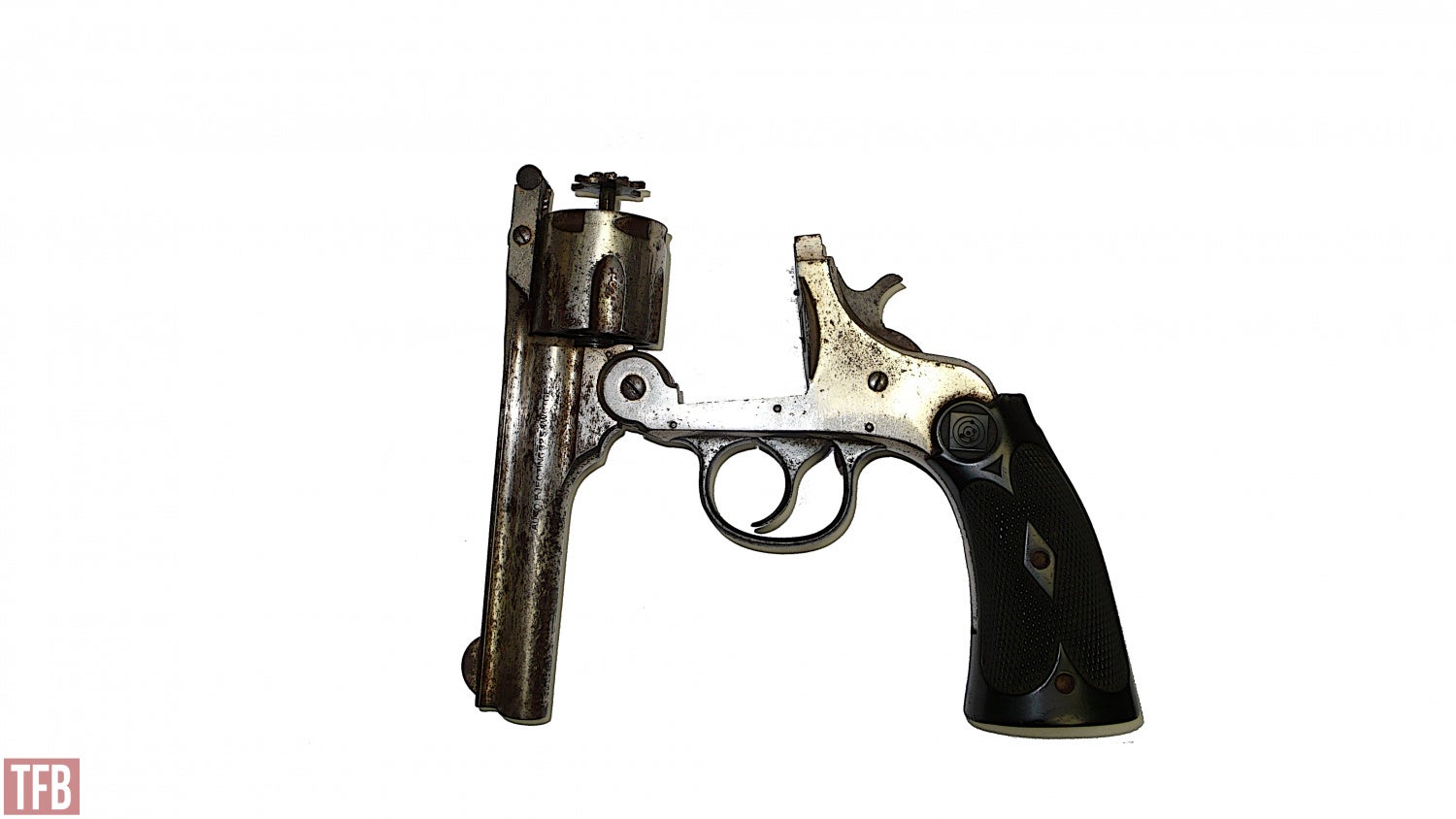
BARREL LOCK MECHANISMS
The issue of having a hinged design that requires a mechanism to lock the barrel and cylinder assembly firmly in place until the shooter needs to reload is that the added recoil will place a lot of stress on the hinge pin and rear locking point, however, that’s to be designed. To date, there are several different examples of the barrel lock. Most commonly seen are Webley’s frame-mounted thumb lever, which incorporates the rear sight, and the Schofield-S&W style which uses a small latch on the top strap that locks over the frame.
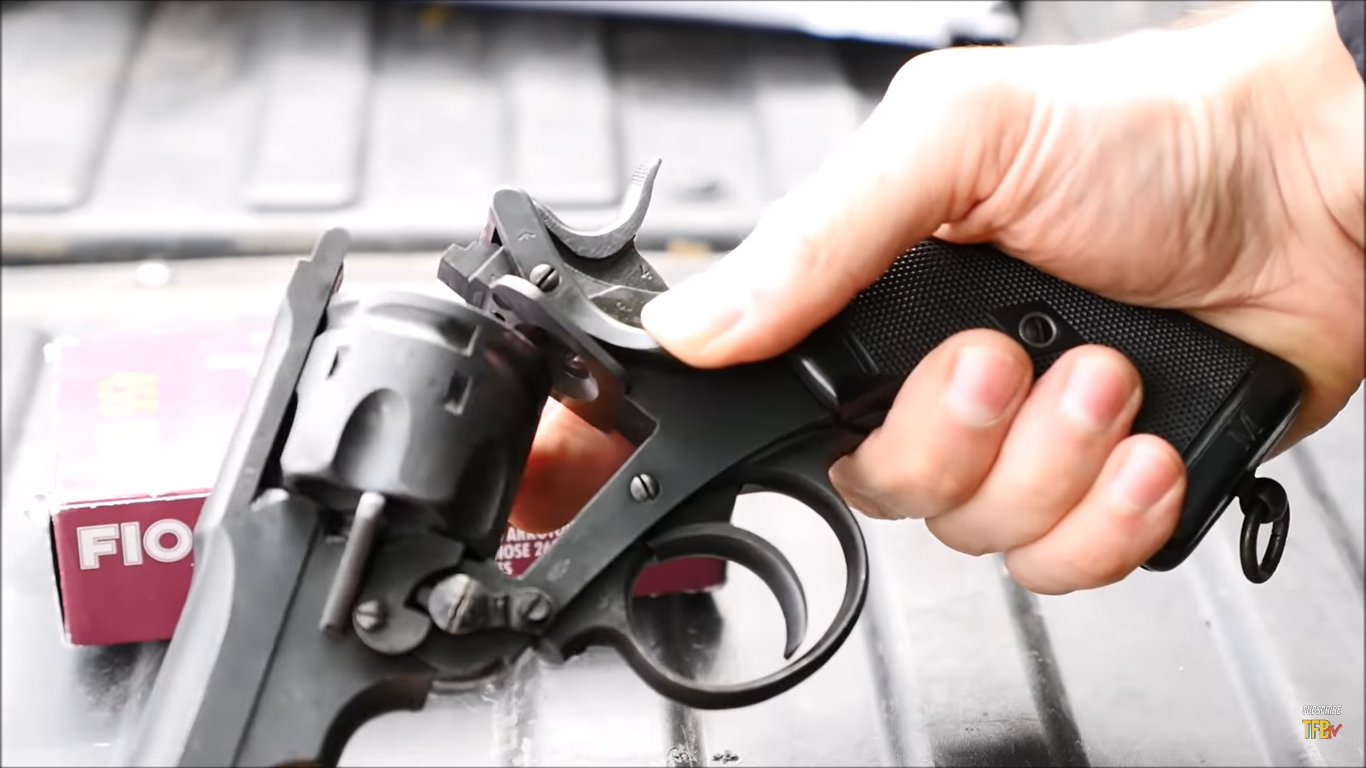
The Webley barrel lock lever in action. Image credit: Alex C. from TFB TV
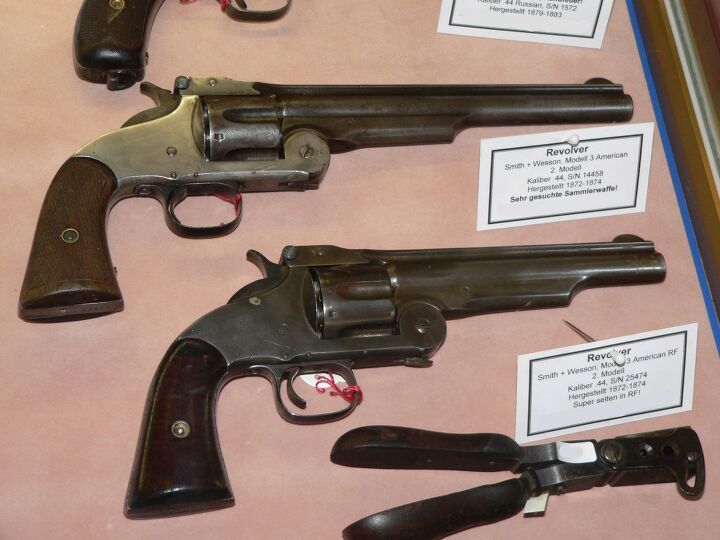
S&W Model 3, image credit: Rama on Wikipedia
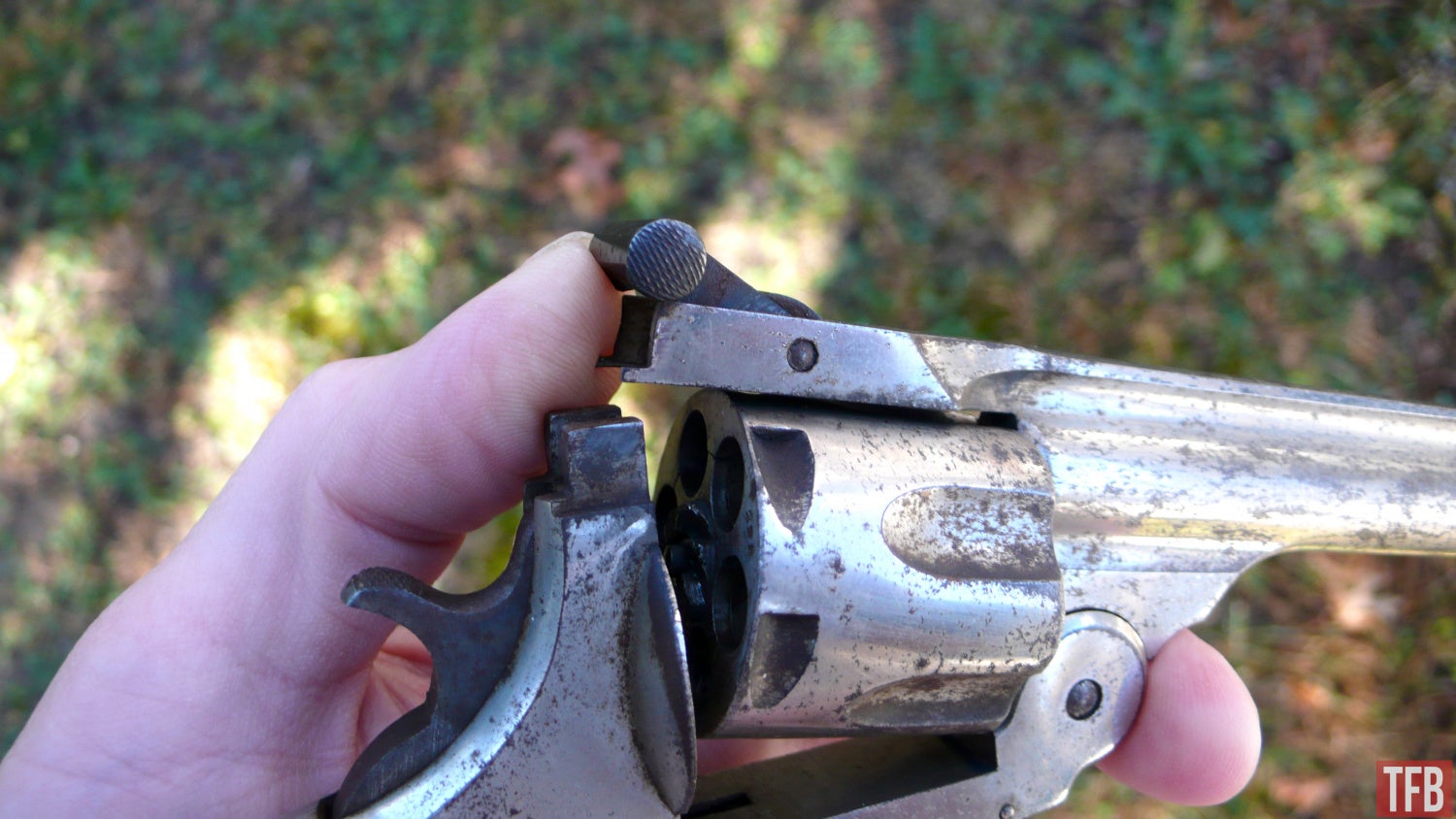
The H&R Auto Eject top break revolver utilized the S&W style barrel lock.
I’ve always liked the Webley design since the lever is ergonomically placed, as long as you’re right-handed. That same design could easily be updated to accommodate left-handed shooters though, as Detonics accomplished in the 1980s (more on that shortly). The Schofield-S&W style, on the other hand, is inherently ambidextrous, but much smaller, and on a full-sized revolver would certainly require a grip change to reach it with the shooting hand. Uberti’s reproduction of the Schofield uses a stirrup-style barrel lock, which is mounted to the frame and needs to be manually pulled back. This style is streamlined to keep the original style intact, but could also be updated to operate like the Webley style.
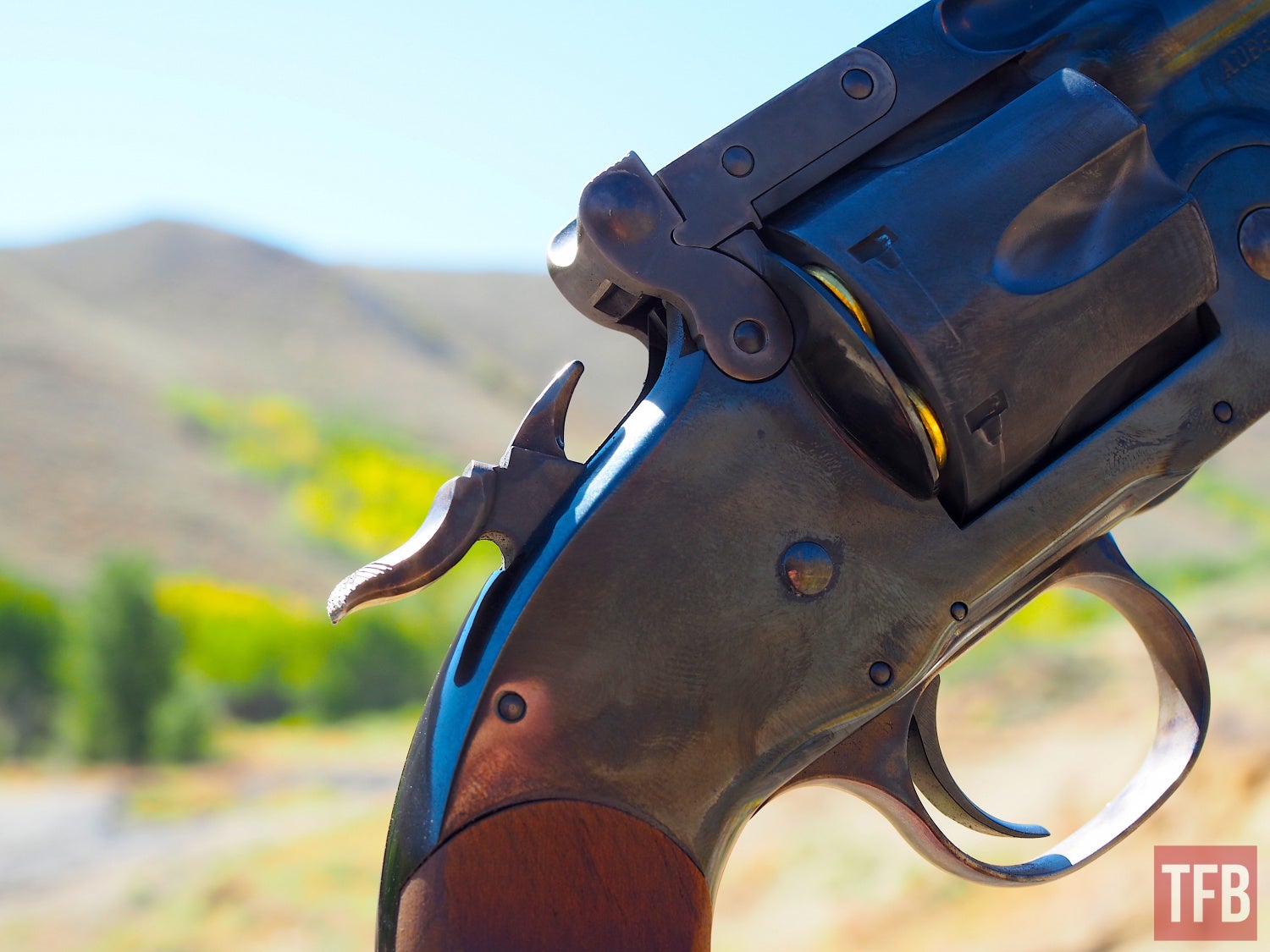
Uberti’s stirrup-style lock. Review of Uberti 1875 by Rusty S.
RELOADS
The main advantage of top break revolvers is the automatic ejection of spent cartridges, which means it’s one less thing the shooter has to do to get the gun back up and running. However, one aspect that doesn’t get much attention is loading fresh rounds into the cylinder. On most top breaks, the top strap of the barrel assembly needs to extend to lock onto the frame in any of the manners we discussed above. This extension of the top strap is typically designed with a tight tolerance in relation to the cylinder, which means that speedloaders won’t have enough room to work unless the locking extension allows a shallow plunge of the cartridges into the chambers.
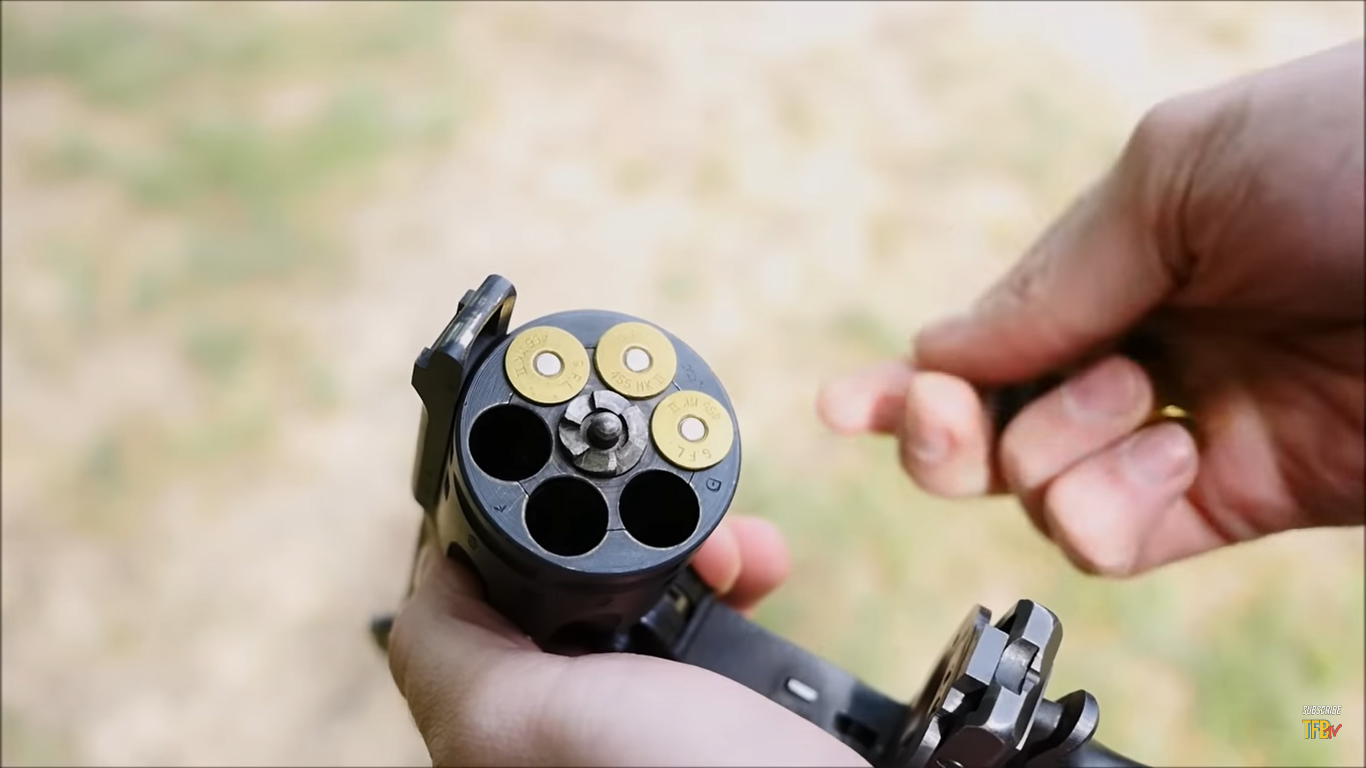
Is there enough clearance for a speedloader on this Webley Mk VI? Image credit: Alex C from TFB TV
Speed strips are still an option for reloading top break revolvers, but a firm, efficient grip of the gun will need to be decided upon, and speed strips aren’t always the speediest. Having the cylinder cut for moon clips is most likely the clear option, but they come with their own issues such as wobbling in the clips, which hinders fast charging to the chambers as each cartridge finds the right orientation to fit. This wobbly issue is seen more commonly in .38 Special and .357 Magnum, whereas pistol caliber cartridges like .45ACP, 10mm Auto, and 9mm seem to have an easier go of it.
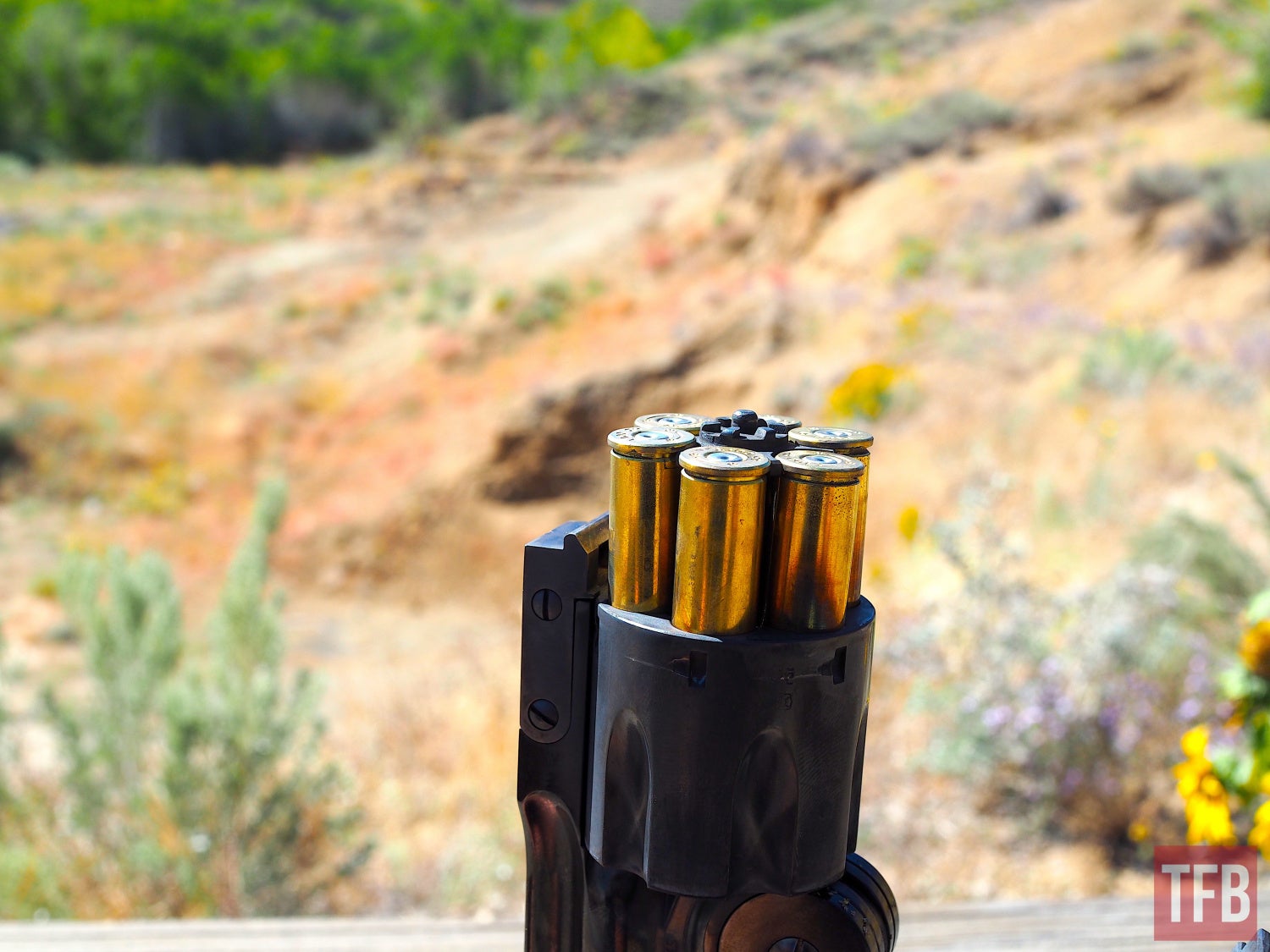
Image credit: Rusty S.
It would be nice if the next top break revolver allowed for the use of speedloaders, but also cut for moon clips to give extra versatility. However, if the barrel locking mechanism must be part of the top strap, then speedloader use may have to take a back seat. Although, I’m convinced that a rear-locking solution could be devised that wouldn’t require the use of the top strap, but would probably add more complexity to the overall build.
DETONICS TOP BREAK – SO CLOSE, YET NEVER BROUGHT TO MARKET
The last attempt at making a modernized top break revolver from the ground up was the Detonics Manufacturing Company in the mid-1980s. The Detonics top break, while quite heavy at 53 ounces, really seemed to be going for as many checkmarks as possible. Sadly, it never came to market. This top break was designed with the ability to change out barrel and cylinder assemblies in order to shoot four different calibers: .357 Magnum, .41 Magnum, .44 Magnum, and .45 Colt. It also extended the Webley-style barrel lock lever to be ambidextrous as you can see in the patent photos below. It was also designed with a seven-shot cylinder, at least in .357 Magnum.
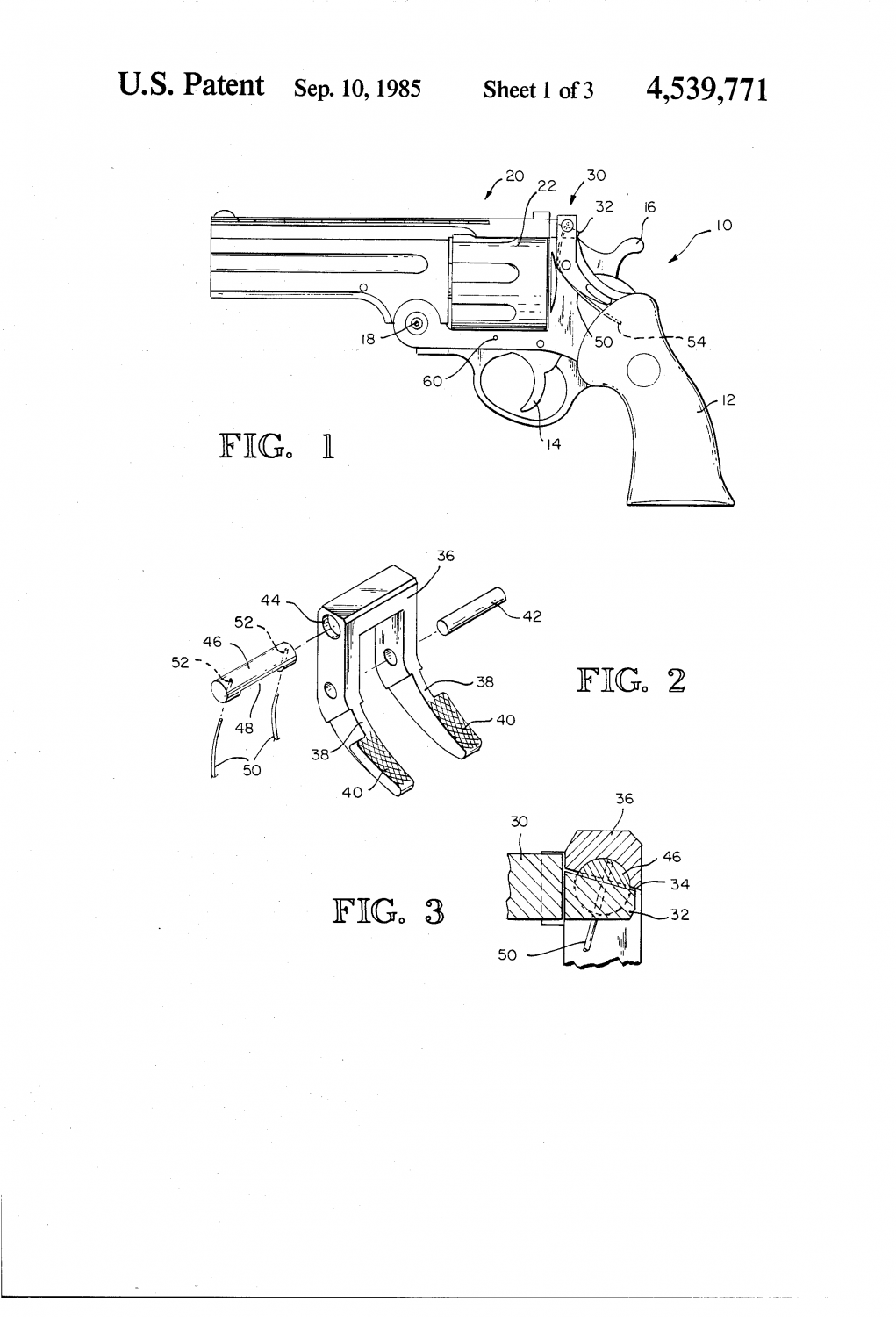
Detonics Top Break Revolver Patent
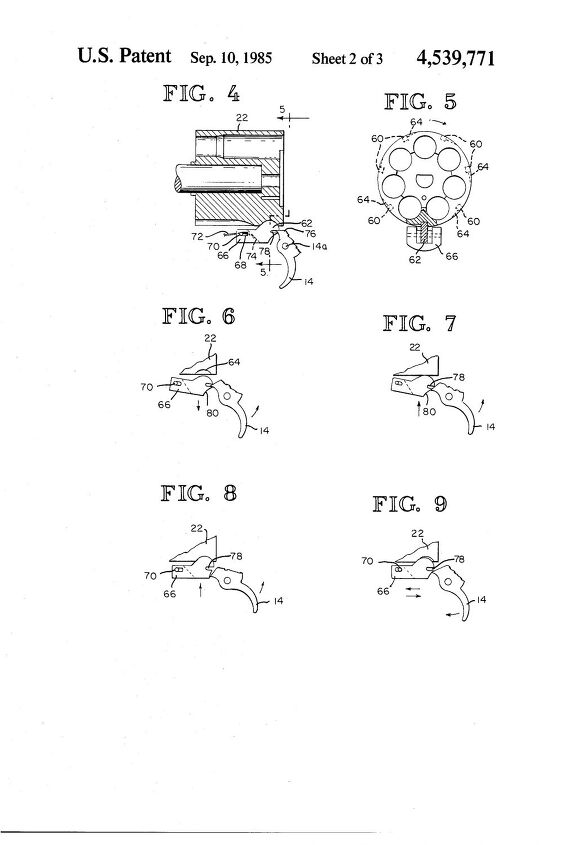
Detonics Top Break Revolver Patent
FINAL THOUGHTS
While there are those of us that would love a modernized top break revolver, there are aspects that make it a large effort and undertaking, with an uncertain amount of potential customers. While I don’t think anyone’s holding their breath for the release of a brand new top break revolver, I’d still love to hear your thoughts on what you’d like to see if one were made. What features would you want prioritized? What would you use it for the most? What sort of barrel locking mechanics would you prefer, something that’s already been done, or something completely new? Which caliber would you prefer it in?
 Your Privacy Choices
Your Privacy Choices
